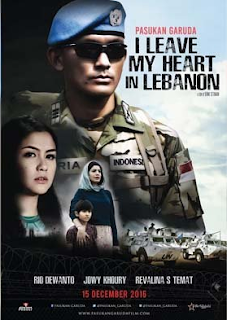Film My Heart Indonesian Full Movie
Posted By admin On 10/05/19“The Look of Silence,” a documentary directed by the American filmmaker Joshua Oppenheimer and an anonymous Indonesian collaborator, is a painful, profoundly empathetic work of moral reckoning. Like its companion film, “The Act of Killing,” released in 2013, it examines the mass killings that began in Indonesia in 1965, when at least a million people were slaughtered in the aftermath of a military coup.
In the earlier movie, perpetrators of the massacres eagerly re-enact their crimes, borrowing costumes and attitudes from American genre movies, as if they were western or film noir heroes. In “The Look of Silence,” it is clear that many of the killers, whose political sponsors are still in power, feel little or no regret for their actions. On the contrary, they bask in a glow of righteous vindication. A death squad commander matter-of-factly talks about “exterminating Communists” for several months and concludes that “because this was an international matter, we should be given a gift. We should be rewarded with a trip to America.” Recalling the Cold War context of the atrocities, he notes that “America taught us to hate Communists.”

Heart Indonesia Full Movie
Love is a 2008 Indonesian romance film directed by Kabir Bhatia as a remake of the 2006 film. This movie won 'Movie of the Year' at the Guardians e-Awards and nominated for 'Favorite Film' at the Indonesian Movie Awards. That 'despite its flaws, [the film] proves to be an emotional reflection on affairs of the heart.
Mr. Oppenheimer, filming in Indonesia over more than a decade, found that this ideology was still very much in place. “The Look of Silence” visits a classroom where young children are taught that the killings were justified. Elsewhere, they are celebrated. Early in the film, two elderly men stroll down an overgrown path to the banks of the Snake River, gleefully demonstrating how they beat their captives, dragged them by the feet and then hacked them to death with knives and machetes. Their laughter is all the more horrifying for seeming free and un-self-conscious, as if they were recalling incidents of youthful mischief.
We watch video of the two men, around 10 years after it was shot, in the company of Adi Rukun, a soft-spoken ophthalmologist whose brother Ramli was killed by the Komando Aksi, a paramilitary organization in the Aceh Province of Indonesia. Mr. Rukun was born in 1968, and he is haunted less by traumatic memories than by their terrible absence. His mother recalls the day of Ramli’s disappearance with unbearable clarity and undiluted sorrow, while his father, who is frail, mostly blind and over 100, drifts in and out of awareness.
Mr. Rukun sets out, along with Mr. Oppenheimer and a film crew, to confront his brother’s killers. Sometimes he conducts eye exams while asking questions, his professional bearing blending with his gentle, insistent manner of interrogation.

The encounters are, for the most part, unnervingly calm and decorous. For half a century, survivors have lived among those responsible for the deaths of their loved ones. Political authorities, neighbors, even relatives and friends have blood on their hands, and acknowledge as much. A few go further, telling of how they drank their victims’ blood, a practice they credit with saving them from the madness that afflicted some of their colleagues.
Amid the laughter, the boasting and the superstition, there are some of the expected evasions and excuses. The killers were only following orders, or targeting bad people, or caught up in the chaos of the times. It was so long ago, Mr. Rukun is told. Why stir up bad memories?
Even when specific atrocities are admitted — or bragged about — ultimate responsibility is pushed away. Death squad members say they were fulfilling the mandates of the military, while politicians insist that the slaughter was the spontaneous expression of popular will. It’s suggested at one point that the “Communists” offered themselves up, asking to be killed as punishment for their transgressions.
With a single exception — an old NBC news report from the mid-1960s — Mr. Oppenheimer avoids the archival footage and explanatory material that usually fill out historical documentaries. His approach is more like Claude Lanzmann’s in “Shoah,” which surveyed the Holocaust by rigorously focusing on the faces and words of witnesses, survivors and participants.
The mood of “The Look of Silence” is tranquil. Its settings — modest houses and sun-dappled gardens, far from the urban bustle of “The Act of Killing” — are peaceful, and Mr. Rukun is a quiet man, contemplating his family’s tragedy more in sorrow than in anger. But this atmosphere has the effect of making the violence at the film’s heart all the more shocking. Movies have helped make even extreme brutality seem banal (that was part of the message of “The Act of Killing”), but hearing a simple, factual account of an atrocity can be almost unbearable.
“After such knowledge, what forgiveness?” T. S. Eliot asked that question, in his poem “Gerontion,” almost a century ago, and it has hovered over much subsequent history. Mr. Oppenheimer and his collaborators pose it with renewed urgency and poignancy, and also suggest the ways that, in Indonesia, forgiveness is still premature. The silence they discover is not a failure of acknowledgment, but the refusal of apology.
“The Look of Silence” is rated PG-13 (Parents strongly cautioned). Extreme acts of violence, rendered in words rather than images.